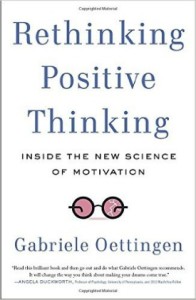Want To Make A Change? Try WOOPing!
February 4th, 2016
First of all, I apologize this isn’t a shorter post. But as the saying goes, I would have written less but I didn’t have time.
Do you want to make a change? Then you’ve come to the right place. I have a new system to share that is easy – and proven – for making a dream come true, or a change for the better.
I’ve made significant changes to my life during the last 5 years, and all of them stuck, and so far have lasted.
There is a book that is most responsible for helping me to master change-making, and it is Switch, by Dan and Chip Heath. I can’t recommend it enough. I read it when it came out in 2010, and it has had a huge impact on my life. So much so that I use many of the principles discussed in the book when I coach, and facilitate development for leaders from throughout the U.S.
Now there’s a new book in my toolkit and, if you are wishing for a dream to come true, or to make a change in your life, then I suggest you get your hands on it. It’s Rethinking Positive Thinking, Inside the New Science of Motivation, by Gabriele Oettingen, a Professor of Psychology at New York University and the University of Hamburg. The book is based on 20 years of research and large-scale studies.
I should come clean here and say I’m an optimist to a fault. I not only think the glass is half full, I think the glass itself is amazing. Among other things, I am an emotional intelligence consultant, and optimism is one of the most valuable traits a person could wish to have. We have the power to choose to be positive, even when things are not awesome. The late, great Viktor Frankl, a Holocaust survivor, Austrian psychiatrist and neurologist, and author of the influential Man’s Search for Meaning (another book I so highly recommend!), said, “Everything can be taken from a man but one thing: the last of the human freedoms—to choose one’s attitude in any given set of circumstances, to choose one’s own way.”
In addition, having positive fantasies is pleasureful, and optimism helps us alleviate our present suffering, while also helping us persevere through adversity. At the bottom of a mountain, it is absolutely more helpful to thinking positively than it is to think negatively.
However, as Oettingen points out, positive thinking is mostly helpful only in the short-term. Positive thinking, and positive fantasies, while they offer value, do not help us achieve our long-terms goals, and in fact, may help ensure that we don’t.
It isn’t enough to sit and dream; we have to take action and make sacrifices… Our dreams may be realizable, but they come down to challenges that require engagement and action. The good news… is that it’s possible to move energetically toward many of our wishes, and to do a much better job deciding which wishes are worth our effort and which aren’t, writes Oettingen.
Research over the past 20 years finds that dreaming about a desired future leads to low investment and little success, regardless of life domains, such as health, work, and interpersonal relationships. In order to benefit from positive thinking about the future, people need to incorporate in that positive thinking a clear sense of reality.
Most of us do not live our Epic Life, or have our greatest impact, or pursue our dreams because of fear. We fear failure, we fear disappointing others, we fear disappointing ourself, and we fear making a fool out of ourselves. These are fears most of us share, and at least one of them is usually the reason we play it safe instead of daring to do what we want or need to do.
One way to overcome these fears, or to proceed despite them, is to confront them at the outset. As an entrepreneur, goal-oriented person, coach and leadership development facilitator, I often use what Tim Ferriss calls “negative visualization” to help myself, or others, identify and articulate risks. By assessing the fears/risks in advance, often we realize the fears aren’t as bad as we make them out to be, which can have the powerful and beneficial effect of nudging us forward, not to mention keep us from being reckless in our pursuits. This process is also called conducting a premortem – imagining in advance all that could go wrong so that we can persevere if and when things go wrong.
Oettingen isn’t suggesting we do away with positive thinking. Rather, it’s making the most of our fantasies by brushing them up against the very thing most of us are taught to ignore or diminish: the obstacles that stand in our way, she writes.
Oettingen calls this process mental contrasting. And her system for helping us achieve our goals and realize our dreams is calling WOOP, which stands for Wish, Outcome, Obstacle, Plan. (In scientific literature it’s called Mental Contrasting with Implementation Intentions, or MCII)
Here’s how it works:
1. Determine a WISH that you have. It can be a short-term goal or a long-term dream. (For example, I tried this out by having a wish, Write a Blog Post Today.)
2. Consider the best OUTCOME. (Given my aforementioned experiment, my outcome was to publish the blog post)
3. Consider the main OBSTACLE that could likely stand in the way of your wish coming true. (I am leaving town at noon, and I also had to write some emails to clients and I also wanted to get a 1-hour skate ski session in. These things could prevent me from having enough time to write and publish a blog post.)
4. Make an If-Then PLAN, such as If (enter obstacle), then (enter desired action). (If I don’t have enough time, then I will skip skiing so I can write and publish the blog post.)
Remember, this system is based on 20 years of research and many large-scale studies. It works. (This blog post is proof, right?! I used the app to create a 24-hour WOOP to accomplish this goal of writing and publishing a blog post before leaving town today at noon. Check!)
A bigger wish I have is related to a family trip we’re planning to Europe. We’re making our first international trip in late May and it will be for 4 weeks. My wish is to really experience and grow with my husband and our three sons while seeing a new part of the world. The ideal outcome for me is for us to further enrich our relationships with one another. A potential obstacle that could prevent the desired outcome is that I’ll be so busy capturing it in photos and sharing them with my networks that I will miss being as present as I’d like to be with my family during the experience. I know with all my being that this is a real threat to realizing my desired outcome. So a plan I will implement is to post only one photo per day from my phone, and then use my camera for the rest of the memory captures.
On that subject of wanting to be present, for yet another book I highly recommend, see Sherry Turkle’s Reclaiming Conversation. Turkle is a social scientist at MIT, and has done extensive research on our increasing tethered-ness to our cell phones. As a result of this tethered-ness, we are often “alone together” – together, but not really. The book, and Turkle’s work are a real cautionary tale. I have been working on strictly limiting my technology use, and our family tried one week without it. It was hard AND amazing. I blogged about it here if you’re interested.
In conclusion, I don’t know about you, but for me, the higher the stakes, the more critical it is that I not only imagine my dream, but that I do the work required to make it come true.
P.S. Here is an exceptional podcast interview with Oettingen by the great Dr. Scott Barry Kaufman. Also, check out WoopMyLife.org to see many testimonials from people in the health, interpersonal and academic domains who have tried, and had success, using the WOOP system. And/or download the app for free on your cell phone.
Thanks for reading, and best wishes at making your wishes come true using the WOOP technique.
- Categories: Fitness, Life and Leadership
- Tags: dreams, gabriele ottingen, goals, positive thinking, WOOP
- Comments: 2 Comments








